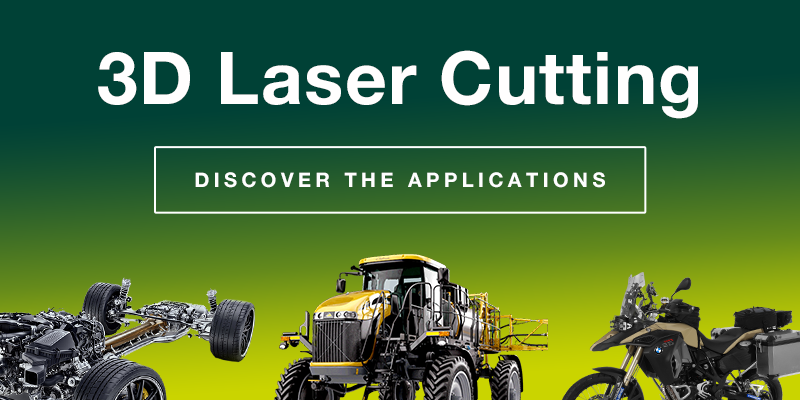Implementing new technologies in production is an increasingly common situation for many companies involved in manufacturing, especially in the metal cutting sector.
The reasons that drive companies in this direction are varied and often linked to the manufacturing processes:
- Responding to specific customer requests, which require more and more spcialized cuts
- Reducing cost per part, processing steps and intermediate storage of semi-finished products
- Introducing automated cutting solutions to eliminate variation and improve quality
Change is typically the result of evolving business needs. As a business owner or leader, your priority is to remain adaptable in the market, anticipating the moves of your competitors and opening new opportunities to expand production and grow your business. In this case, the choices can be driven by the goal of:
- Introducing a new technology in the company that offers more flexibility in cutting than existing ones
- Making possible what was previously impossible
- Going beyond the limits of the machinery to open up new markets and expand the business
If you are considering the introduction of new metal cutting technologies in your company, here are 7 elements that you absolutely must consider:
- The choice must be directed towards tomorrow and not today
- You have to understand which are the main development areas for metal cutting...
- ...and knowing that the market increasingly requires cutting bent, hydroformed tubes as well as stamped and deep-drawn sheets
- It is necessary to ensure that quality and precision depend on the machine not on the operator's experience
- You need to assess the compatibility of new technologies in your plant
- ...and evaluate how machines wihtout manual operations may require different skilled laborers
- Finally, always keep in mind that the perfect metal cutting technology does not exist but that one most suited to your needs does
A choice directed towards tomorrow and not today
Purchasing new machinery cannot be done just by evaluating current needs, but also by considering future needs.
It is necessary to forecast future needs to avoid foreclosing future opportunities. You must be a visionary able to predict changes not only follow them, overcoming the limitations imposed by current systems.
In this perspective, in order to open up to new markets and expand your business, you need to ask yourself some questions:
- What do I buy today will make it possible to make products that are completely different?
- Will the system that I purchase now also adapt to future technologies?
What are the main areas of development for metal cutting?
The new metal cutting technologies have effectively adapted to the most varied sectors because they have been able to capture needs in an efficient and innovative way.
A particular development is that of 3D cutting technologies which have brought about the following advantages:
- Productivity: mainly required in the automotive, industrial vehicles, motorcycles and plant engineering sectors.
- Precision and quality: especially for aerospace, defense and high-end vehicles
- Flexibility and ease of use: especially for contract work.
In sectors such as furniture, 3D cutting offers the possibility of creating even more complex 3D shapes.
The use of stamped or deep-drawn sheets is widespread for making electrical, air conditioning, and oil & gas system components.
In the automotive, aerospace and motorcycle industries, as a result of 3D modelling and FEM (Finite Element Method) analysis, a large number of traditional mechanical parts have been replaced by curved, hydroformed, three-dimensional, deep-drawn or molded tubes. These parts are designed to reduce the weight of vehicles and the number of components used, whereby optimizing material use.
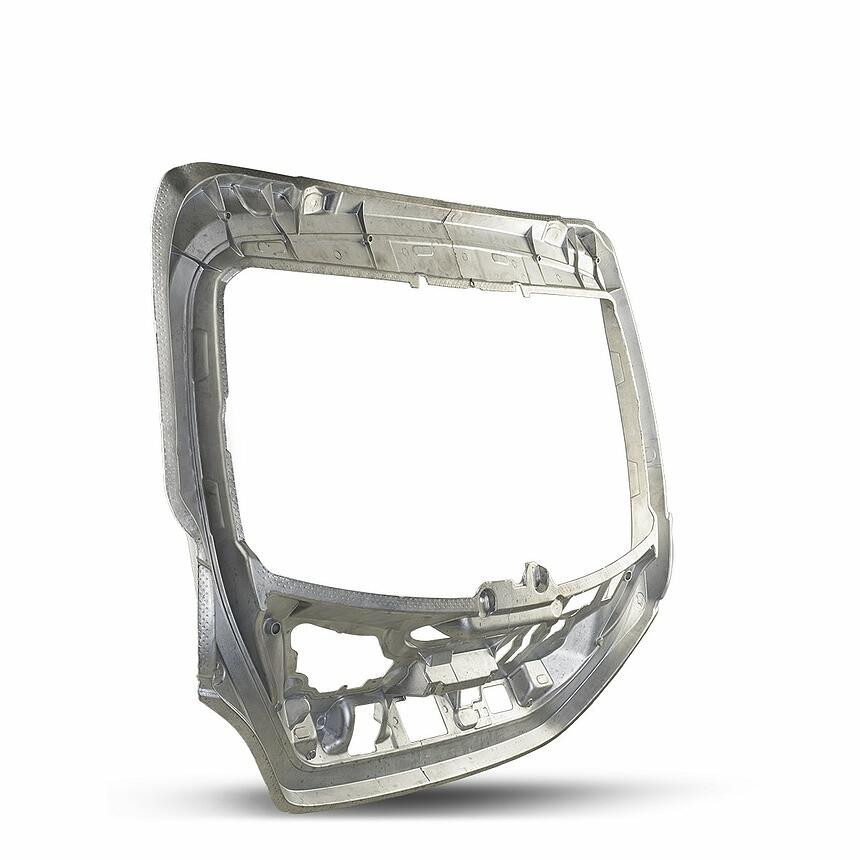 |
| Example of preformed sheet for the automotive sector |
How can I cut bent pipes, hydroformed pipes, pressed and deep-drawn sheets?
The cutting of complex three-dimensional profiles is one of the challenges in metal cutting and a frequent battleground between the mutually contrasting requirements of productivity and flexibility.
If the batch is large enough, the use of technologies such as blanking and punching, or other special machines equipped with specific punches and dies, can be justified.
What should I do when the batch volume is low?
Let's take as an example the cutting of bent tubes. The number of cutting technologies involved increases proportionally to the number of geometries or processes to be performed.
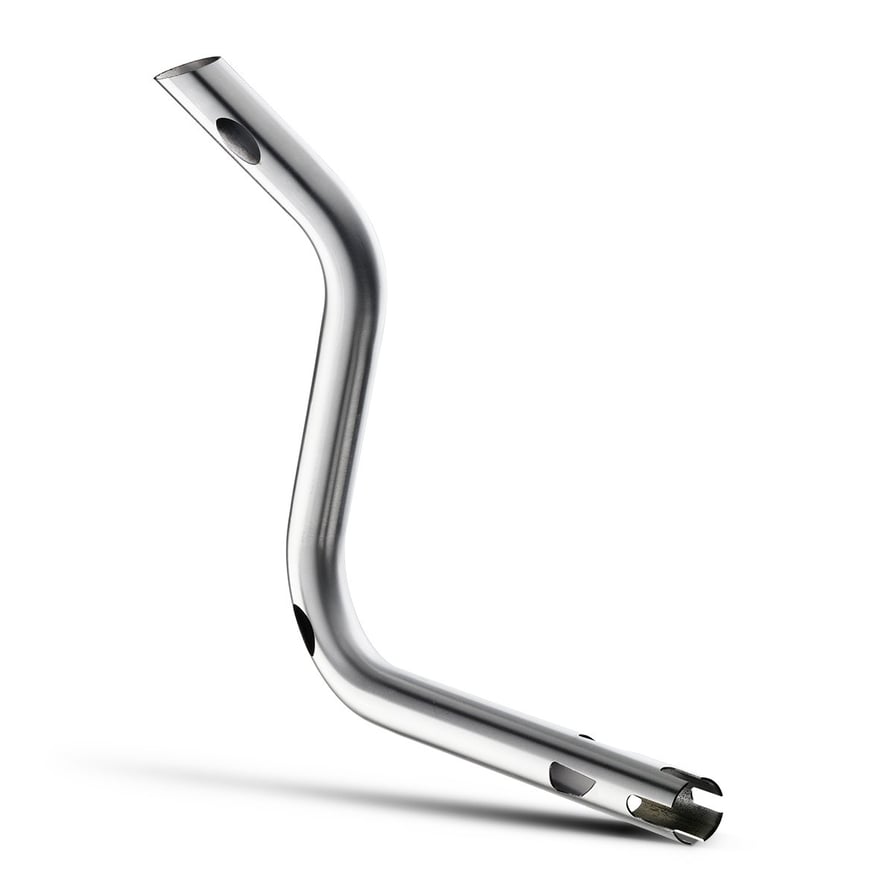 |
| Example of tube cut after bending |
If the requirement is to cut a tube into two parts, a conventional sawing machine may be suitable. To add holes, a column drill or a milling cutter may be sufficient, according to the required tolerances.
However, when a high precision standard is required and the geometries to be cut on the tube are more complicated, it may be necessary, but sometimes not sufficient, to use a five-axis cutter with all the limits in terms of feasible geometries, cutting speed and part thickness that this technology implies.
When thickness decreases and faster cutting speeds are required, the answer is five-axis laser cutting. This solution is proving to be successful in the processing of three-dimensional profiles, curved tubes, deep-drawn tubes, printed tubes and hydroformed tubes.
Learn more about the pros and cons of 5-axis laser cutting
Quality and precision can no longer be the result of experience alone
When part geometries are particularly complex and machining operations grow in complexity and type, basing the quality of your product only on the experience of your operator can lead to many drawbacks, especially in terms of repeatability:
- Even the most experienced operator can be tired or simply have a day off, so the quality of the result will never be the same.
- Humans need rest, machines do not. Consequently, productivity will be influenced by the pauses necessary for human physiology.
- An expert human being will never be as precise as a robot or machine, so it will be difficult to have the same accuracy.
- Expert operators will be increasingly difficult to find in the future: this will make it difficult to predict qualification costs and levels.
This is why it is necessary to make finished product quality independent from the operator's experience and skills.
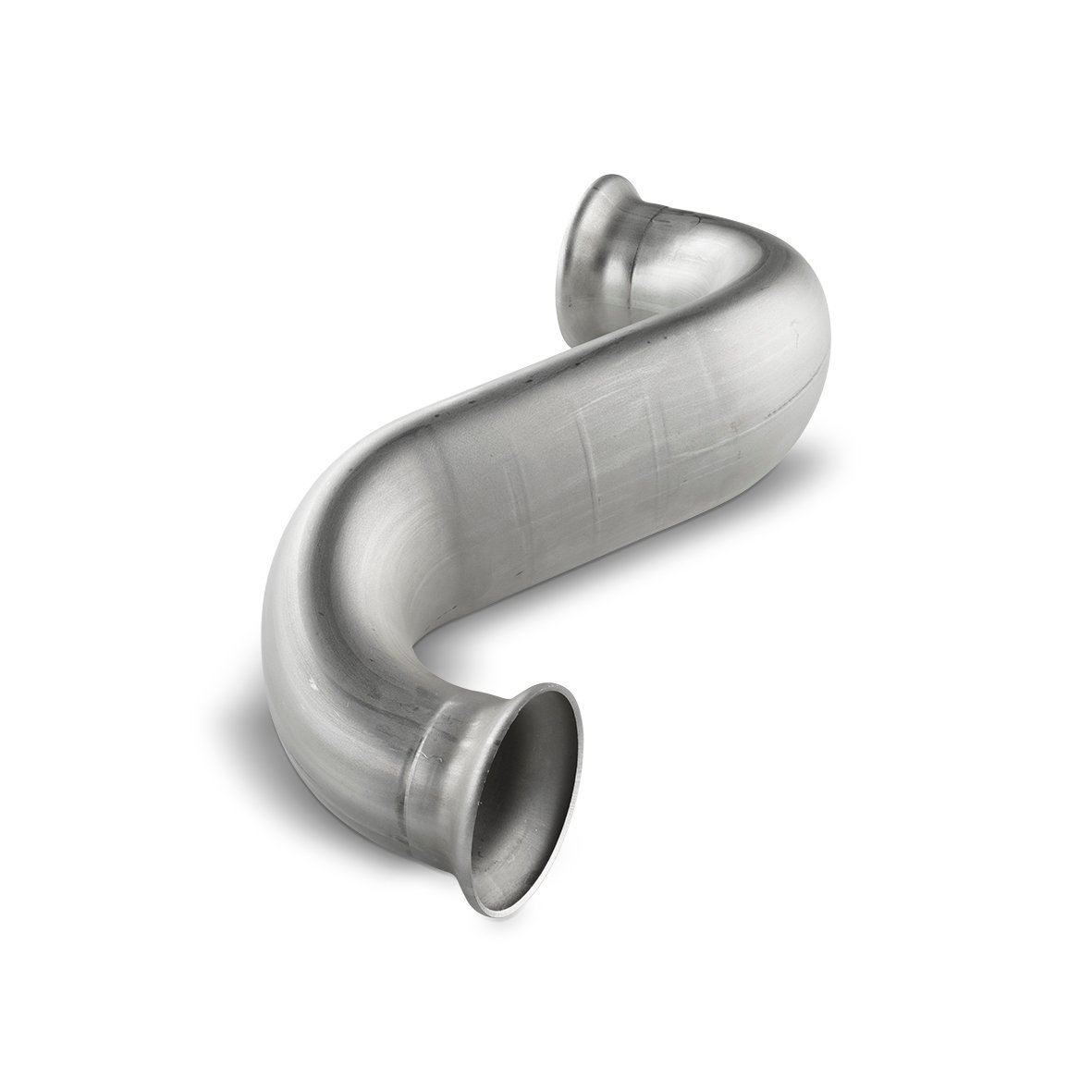 |
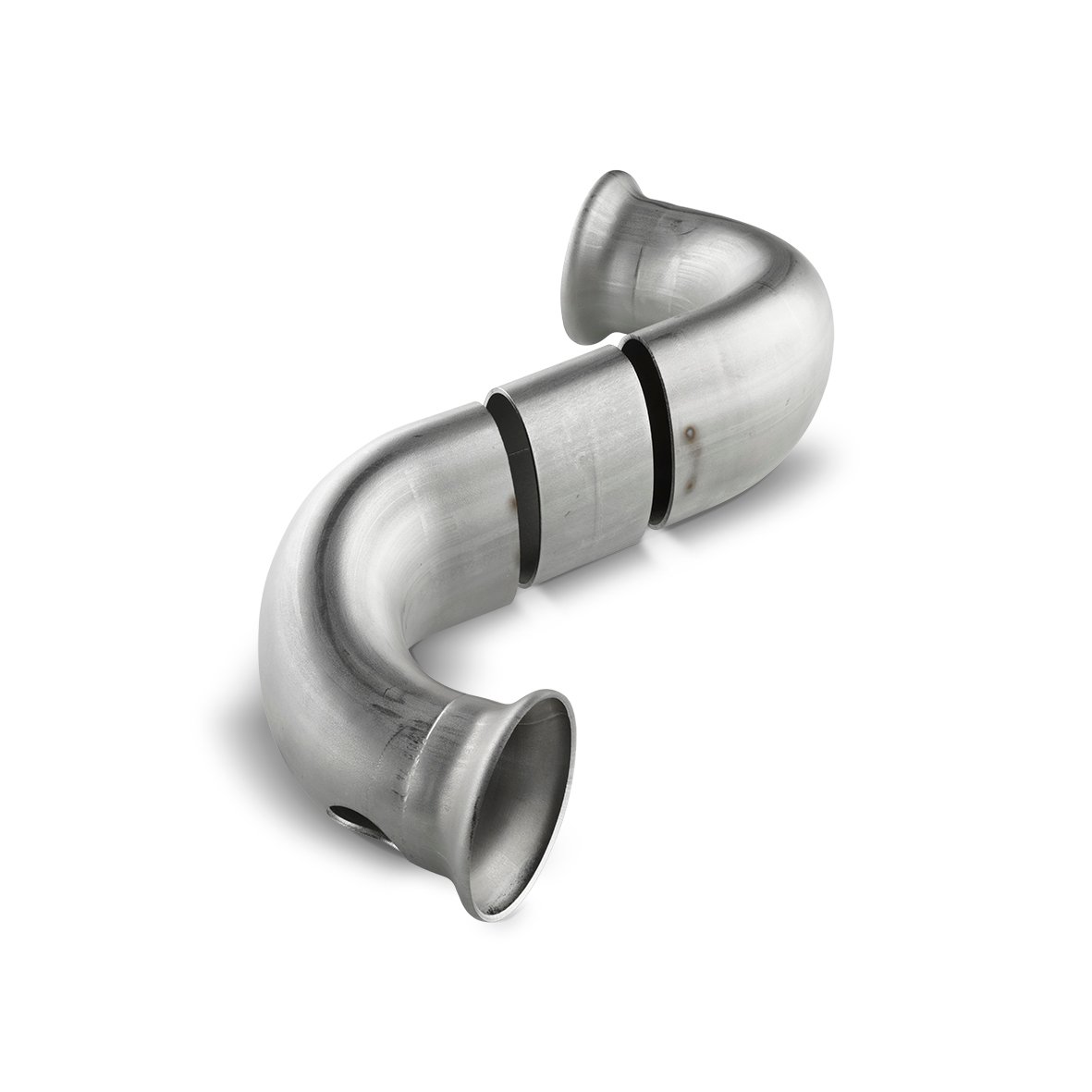 |
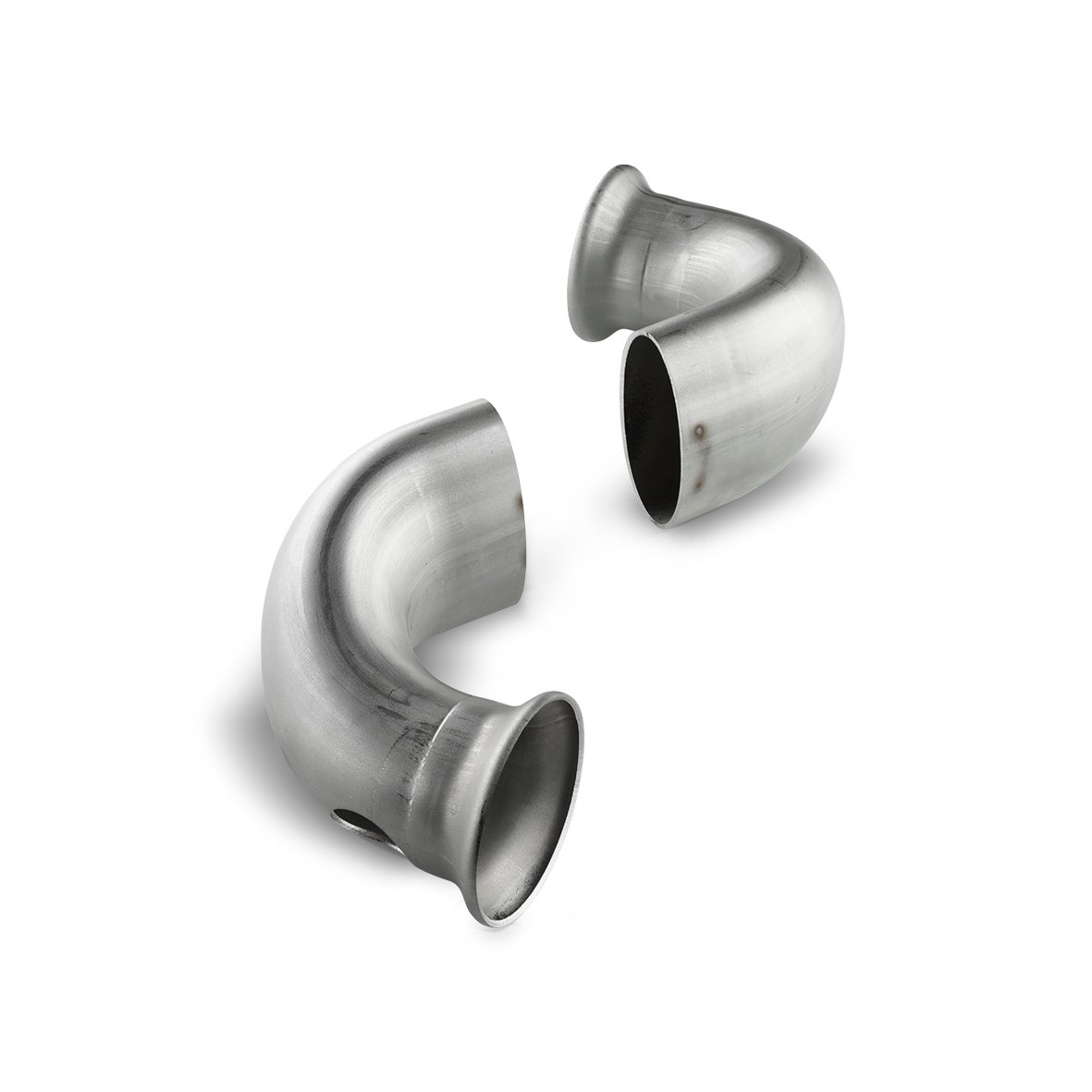 |
| Example of hydroformed part cutting quality | ||
How can I apply new technologies in my system?
The installation of a new production system requires close collaboration across organizational departments.
Often the application of new technologies in an existing production system can bring about many changes or critical issues, which branch out on several levels:
- Compatibility with your own production
- Compatibility between available machines
- Compatibility of the system itself with your company and with maintenance services.
- Last but not least, personnel training.
These are the questions that are often asked in these situations:
- Which tecnology should I choose?
- Will I have to adapt other systems as well?
- Will the introduction of the new machinery be accepted well in my production system?
Only a reliable and experienced supplier will be able to provide useful and practical answers.
Find out how to choose the solution that best suits your needs
Metal cutting without manual operations: how is the job changing?
In recent years, metal cutting technologies have been developed and automated to such an extent that manual operations are kept to a minimum. In today’s market conditions, this is the new norm, but may not be sufficient to keep a competitive edge.
The increasing reduction in production lots and the ever-increasing number of different parts mean that the skill requirements of the workforce are increasing. The machine operator’s role no longer consists of carrying out the loading, unloading and inspection. Today, with sophisticated cutting systems, a vast amount of administration and operating costs are incurred for such individual processes.
And this is exactly the core of the problem. It’s challenging to find and keep skilled and experienced staff. One solution is to invest in machines with high-level programming systems and easy to user interface to allow operator to monitor the production process and intervene simply and effectively.
The following features can be very useful in facilitating operation while increasing efficiency and saving cycle time:
- User-friendly programming software.
- Common interfaces across multiple machines.
- System for automatic setting or adaptation of working parameters.
- Simulation of the working process.
- Wizard functions.
- Remote or web-based assistance.
What is the perfect metal-cutting technology? The one that best suits your needs
There is no perfect metal-cutting technology. It all depends on what you need to produce, or on your future vision.
To help you find your way around, we recommend that you pinpoint the questions to ask to find the right technology for your business.
Five-axis laser cutting can really represent a turning point for everyone who works or want to work with increasingly complex three-dimensional profiles in a flexible manner and with unparalleled cut quality.
|
|
| Example of hydroformed part 3D laser cutting (for the automotive industry) |



